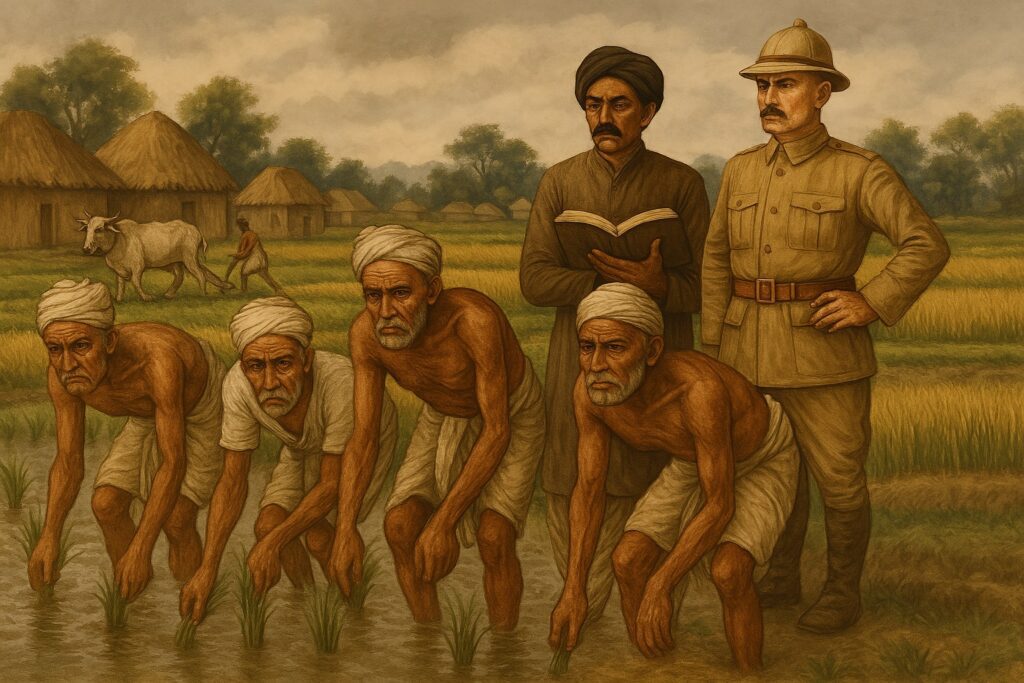The Tin Kathia system was a oppressive agrarian arrangement that prevailed in the Champaran region of Bihar during the British colonial period. “Tin Kathia” literally translates to “three kathas” (a unit of land measurement in eastern India). This system became infamous for its exploitation of local farmers and played a critical role in the socio-economic degradation of rural Bihar under British rule. The system also became the backdrop for Mahatma Gandhi’s first major satyagraha in India.

Table of Contents
Origins and Features of the Tin Kathia System
The Tin Kathia system was introduced by British indigo planters, known as nilhe sahibs, to ensure a steady supply of indigo, which was a cash crop in high demand in European markets. Under this system:
-
Three kathas of land per bigha (roughly 1/5 of an acre) were compulsorily reserved by tenants for indigo cultivation.
-
The farmers had to grow indigo on these three kathas and sell the produce only to the planters at fixed, exploitative rates.
-
Often, they were not paid fairly, and the cost of cultivation far exceeded the returns.
This arrangement lacked consent and was imposed through coercion, threats, and manipulation by the British planters and local zamindars (landowners).
Socio-Economic Impact
-
Exploitation of Farmers: Farmers were left with little land to grow food crops, pushing them into poverty and hunger.
-
Debt Trap: Many peasants fell into debt as they had to borrow money to cultivate indigo, which did not yield profitable returns.
-
Loss of Autonomy: Farmers had no freedom to choose their crops, leading to agrarian distress and a break in the traditional agricultural cycle.
-
Destruction of Soil: Continuous indigo cultivation led to the exhaustion of soil nutrients, further reducing agricultural productivity.
Gandhian Satyagraha and Abolition
The inhumane nature of the Tin Kathia system sparked resistance, most notably the Champaran Satyagraha of 1917 led by Mahatma Gandhi. It was his first major political movement in India. After gathering testimonies from the oppressed farmers and negotiating with the colonial government, Gandhi:
-
Exposed the injustices of the indigo planters,
-
Secured partial relief for the peasants,
-
Eventually influenced the abolition of the system.
The Champaran movement marked a turning point in India’s freedom struggle and brought national attention to agrarian injustices.
The Tin Kathia system serves as a historical example of the exploitative land revenue systems that prevailed under British colonial rule in various parts of India. The struggles and movements against such systems, like the Champaran Satyagraha, played a crucial role in the broader Indian freedom movement and the eventual achievement of independence in 1947.